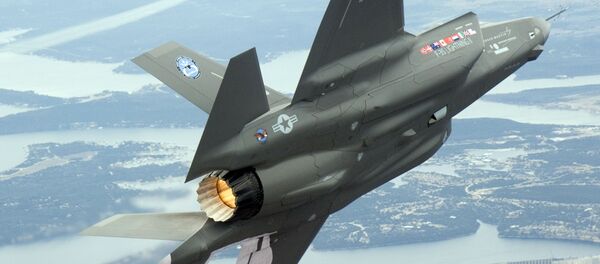The contract, awarded to Lockheed Martin by the Pentagon's Defense Advanced Research Projects Agency (DARPA), is tasked with creating a tactical-range, air-launched hypersonic boost glide system for the US Air Force, which would be used for offensive strike missions.
The US military's Prompt Global Strike initiative, conceptualized in the mid-2000s with a view to give the US the ability to deliver a precision-guided conventional airstrike anywhere on Earth in the space of one hour, has resulted in a cornucopia of projects, conducted by a variety of companies and government agencies.
The latest of these projects are expected to see the light of day in the near future, anywhere between 2018 and 2020. In June, DARPA announced that it will begin the production of the XS-1, a prospective reusable hypersonic space plane, beginning in 2017. That multifunction project is conceptualized with the view of giving the Pentagon a launch vehicle capable of delivering a payload to low Earth orbit, plus a reconnaissance unit, an interceptor, and even a bomber.
Along with the US, Russia and China are actively engaged in the developing hypersonic weaponry. The two countries' projects are somewhat more modest in their ambitions, with designs such as Project 4202 designed primarily to counter the US missile defense program (thus preserving the global strategic nuclear balance). Russia's hypersonic cruise missiles, capable of speeds between Mach 5 and Mach 7, are expected to be introduced by 2020.
Back to the US program. The Tactical Boost Glide (TBG) project was initially the charge of defense contractor Raytheon. In 2015, the contract was valued at $19 million, and soon grew to $25 million after Lockheed Martin joined in.
Mardasov explained that while "the precise deadlines and specifications of the TBG project have not been specified, we do know that this program uses technologies which were developed for the Hypersonic Technology Vehicle 2 (HTV-2) project, and that TBG assumes the creation of hypersonic means to deliver a payload not just from air-based systems, but from land-based ones as well. According to some sources, the unit has an expected range of 1,500 km."
HTV-2 was tested three times — in April 2010, August 2011, and November 2011. With the first two tests resulting in the vehicle's destruction, the third, combining research from the AHW project, was deemed successful, having reached its target at a test site in the Pacific Ocean. "After separating from its rocket launch vehicle, and then, from the AHW booster, HTV-2 slid into the atmosphere at hypersonic speed, just as the Pentagon planned."
"Perhaps American engineers have managed to sort out [the X-51A's problems] between then and now," Mardasov suggested. "For example, Russia has already announced that the military will receive 3K-22 Zircon hypersonic cruise missiles by 2020, with the system already undergoing testing at a ground-based launch complex. According to reports, that missile has a range of up to 1,000 km."
Speaking to Svobodnaya Pressa, military analyst Viktor Murakhovsky explained that the US program to create an air-launched hypersonic missile is meant to help develop and iron out technologies which can later be used on land-based systems, and even for hypersonic missile warheads.
"It must be said that the US has many projects of this kind," the analyst noted. "They include the AHW, Falcon…a paper project to create a hypersonic twin-engine reconnaissance aircraft (the SR-72) and others. But no one, not even the Americans, has actually developed an air- or land-based pre-production model" of such a system yet.
Several issues must still be resolved for that to change, Murakhovsky explained, including the creation of a ramjet engine capable of bringing the craft to hypersonic speeds, and issues related to range and maneuverability. "As practice has demonstrated, airfoils with aerodynamic characteristics are difficult to control at high speeds. And there are other smaller problems, including maintaining communication with vehicles moving at such speeds, when the craft is essentially moving inside a plasma cocoon."





